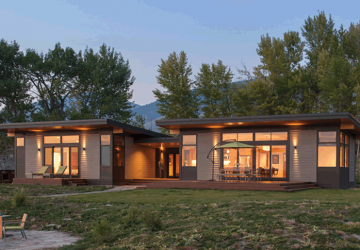- Published on
Essential Pre-Home Planning: Mastering the Art of Modern Homeownership
Essential Pre-Home Planning: Mastering the Art of Modern Homeownership
Over the past few years, individuals looking to purchase homes have been adopting a fresh and effective method for moving into their ideal residences. The concept known as 'Pre Home' has become a popular solution amidst the evolving real estate market, directly focusing on issues such as affordability, ecological responsibility, and the extensive time commitment required by conventional homebuilding methods. This approach isn't just a passing phase; it represents a significant shift towards a more intelligent and well-planned pathway to owning a home.

The notion of a Pre Home typically refers to prefab housing, yet its scope is wider, involving a thorough pre-construction stage that involves planning for everything from the initial design to construction, and the final touches that make a building feel like a home. Pre Homes exemplify the benefits of advanced planning and the cost and time savings that result from addressing future needs and preferences early on, even before the foundations are laid.
Embracing Sustainability
At the heart of the Pre Home concept lies a commitment to sustainability. As environmental awareness grows, the wasteful and inefficient methods of traditional building are becoming less acceptable. Pre Home construction addresses these problems by utilizing precise engineering and production methods that minimize waste and reduce the ecological footprint often associated with building on the site.
Affordability Advantages
Pre Homes are also altering the landscape of home affordability. The standardization of construction processes enables better cost prediction and management. Mass production in factories often means that superior materials and features become more affordable, offering a cost-effective route to homeownership that does not sacrifice quality.
Accelerated Construction Pace
Another enticing feature of Pre Homes is the speed of assembly. Traditional home building is a lengthy process affected by unpredictable factors such as weather and contractor availability. In contrast, Pre Homes are mainly put together in controlled environments and then installed on the property, which speeds up the time it takes for homeowners to move in.
Design Versatility
Today's prefabricated homes offer extensive design diversity, a significant advance from the repetitive styles of yesteryear. Whether homeowners desire a modern urban feel or a quaint rural aesthetic, there are countless customizable options available to align with each person's unique taste and lifestyle requirements.
Overcoming Challenges
Despite the array of benefits, the Pre Home model does encounter obstacles, particularly concerning public image and regulatory hurdles. More effort is necessary to enhance the perception of Pre Homes' quality, durability, and longevity to address old misconceptions. Additionally, zoning and building regulations have yet to catch up with these innovative housing solutions, necessitating advocacy and education efforts to prompt changes in policy.
Future Prospects and Technological Integration
As we look to the future, the potential for technology to further improve the Pre Home experience is substantial. Envision intelligent Pre Homes with built-in smart technology that manages energy, ensures security, and provides seamless connectivity, all from one central device. With the expanding integration of the Internet of Things (IoT), Pre Homes may become hubs for connected, modern living. In conclusion, the adoption of the Pre Home approach is redefining what it means to be a homeowner. It aligns with contemporary values of protecting the environment, financial wisdom, and effective time management. As global challenges persist and lifestyles evolve, Pre Homes offer a forward-thinking and custom-tailored solution for those looking to fulfill the timeless aspiration of owning a home.